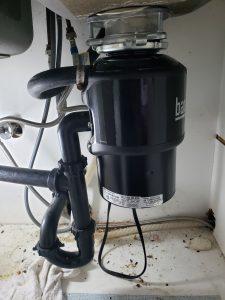A Garbage Disposal is a great kitchen piece of machinery that makes food scraps go away without making a smelly, gooey mess in the trash bin. But even this hardy piece of technology can clog and malfunction. So here are some Do’s and Don’ts to keep your garbage disposal working smoothly without jamming.
5 Things You Do Not Want to Put Down Your Garbage Disposal
- Bones – Instead of being crushed and going through the system, bones will just keep spinning around and around with the blades. If they do manage to make it past the disposal, they won’t be able to go down the drain pipes. Instead, they’ll simply stick and potentially clog your entire system. There’s some debate about the safety of disposing of very small bones, but it isn’t worth the risk.
- Fibrous/starchy fruit and vegetable peels – Banana peels contain stringy, fibrous material that can split off from the peel itself and wind around the disposal’s blades. The disposal gets more and more tangled as it spins, and may lead to severe damage. Potato peels have a high starch content, causing them to turn into a thick, soupy mush that consequently causes clogs and blockages in the pipes. Add celery, onion skins, corn husks, artichokes and asparagus to this list.
- Fruit pits and nuts – Ever try to cut a peach or avocado pit in half? Can’t do it, right? Neither can your garbage disposal, which also can’t do double-duty as a nutcracker.
- Pasta, rice, and oatmeal – How much trouble can those little grains cause? Or soft pasta? A significant amount, when the water greatly expands them from their original size. Think about the difference between a dry and wet kitchen sponge, and you’ll get the picture. In this state, they can easily fill up the disposal trap, or block the drain or pipes.
- Eggshells – Again, disposing of eggshells is the subject of debate. Some argue that the shells help keep the blades sharp; others point out that the inner membrane can cling to the edges of the disposal unit, which is not a good thing. Better to exercise caution and dispose of them in the waste basket or add to the compost pile.
3 Things You Want to Do to Maintain It
- Regularly Clean the Disposal. Cleaning your garbage disposal is essential for maintaining its functionality and eliminating unpleasant odors. To clean it, follow these steps:
- Turn off the disposal and unplug it or switch off the circuit breaker for safety.
- Use a long-handled brush or a disposal cleaning brush to scrub the inside of the disposal. Make sure to clean the rubber flaps and crevices thoroughly.
- To eliminate odors, you can use disposal cleaning tablets. These will leave your kitchen smelling fresh.
- Use it Regularly. Surprisingly, using your garbage disposal regularly can help prevent it from seizing up due to rust or corrosion. If it sits unused for an extended period, the moving parts can become stiff. Run the disposal for a few seconds regularly to keep it in good working condition.
- Address Clogs Promptly. If you notice that your garbage disposal is draining slowly or making unusual noises, it may be a sign of a clog.
By following these tips, you can ensure your garbage disposal works efficiently and lasts for years. Remember to treat your garbage disposal with care, avoid overloading it, and clean it regularly to enjoy a hassle-free and odor-free kitchen.
If you need a garbage disposal replaced or need to unclog it. Give us a call!

